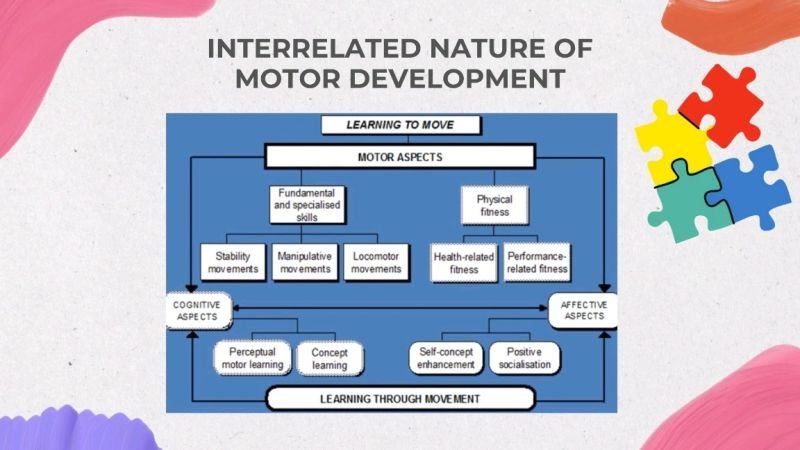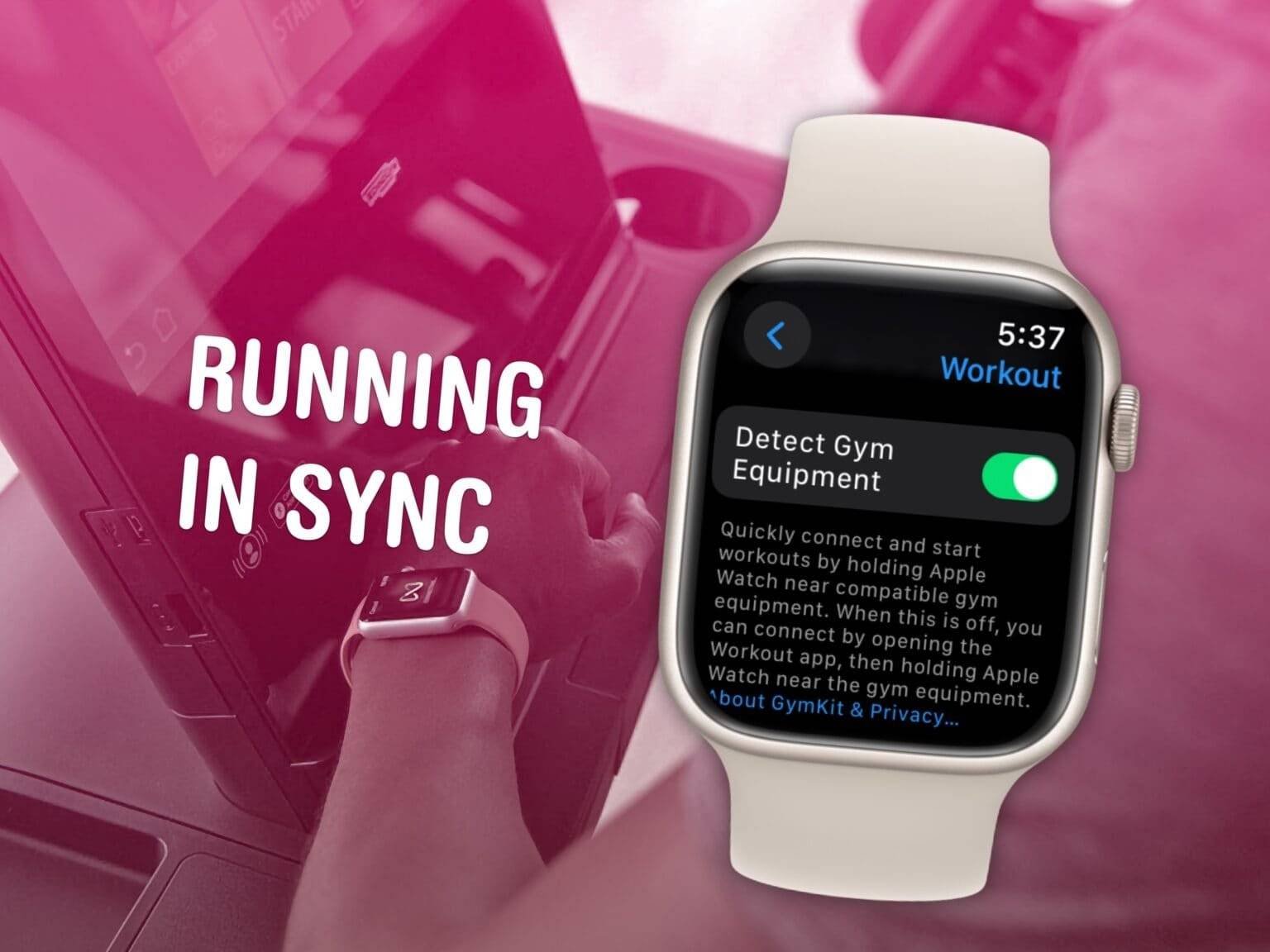explain how the components of skill-related fitness are interrelated and how each is of importance. Each component enhances overall athletic performance and contributes to overall physical competence.
Skill-related fitness includes agility, balance, coordination, power, reaction time, and speed. These elements work together to improve athletic performance. Agility helps in quickly changing directions, while balance ensures stability. Coordination allows the body to perform complex movements smoothly. Power combines strength and speed for explosive actions.
Reaction time determines how quickly an individual responds to stimuli. Speed is essential for quick movements. These components are crucial for athletes and active individuals. They improve performance, prevent injuries, and enhance overall physical capabilities. Developing these skills leads to better fitness and a healthier lifestyle.
Introduction To Skill-related Fitness
Skill-related fitness is key for athletes and fitness enthusiasts. It focuses on abilities crucial for performance. This fitness type enhances your athletic skills.
Defining Skill-related Fitness
Skill-related fitness involves six main components:
- Agility: Quick body movement and direction changes.
- Balance: Maintaining control over your body’s position.
- Coordination: Smooth and efficient movements.
- Power: High-intensity effort in a short time.
- Reaction Time: How fast you respond to stimuli.
- Speed: Fast movement of your body or parts.
The Importance Of Skill-related Fitness In Sports
Skill-related fitness boosts sports performance significantly. Each component plays a vital role:
| Component | Importance |
|---|---|
| Agility | Helps dodge opponents and navigate obstacles. |
| Balance | Keeps you steady during movements. |
| Coordination | Ensures seamless execution of complex actions. |
| Power | Enables explosive actions like jumping. |
| Reaction Time | Quickens your response in crucial moments. |
| Speed | Increases your pace in sprints and races. |
All these components interlink. Together, they build a strong foundation for sports excellence.
Agility: The Game Changer
Agility stands out as a key component of skill-related fitness. It involves quick, precise movements. These movements require coordination, balance, speed, and strength. Agility helps athletes excel in various sports and activities. It boosts performance and reduces the risk of injury.
Benefits Of Agility In Athletic Performance
Agility enhances overall athletic performance. It allows athletes to change directions swiftly. This is crucial in sports like soccer, basketball, and tennis. Quick direction changes keep opponents off balance. Improved agility leads to better reflexes. Athletes can respond faster to unexpected situations.
- Enhanced coordination: Agility drills improve hand-eye coordination.
- Injury prevention: Agility training strengthens muscles and joints.
- Better balance: Maintaining balance during quick movements is vital.
Training Techniques To Improve Agility
Various techniques help improve agility. Incorporate these exercises into your routine. They boost agility and enhance overall fitness.
- Ladder Drills: Use a speed ladder for quick foot movements.
- Cone Drills: Set up cones in different patterns. Run around them quickly.
- Plyometric Exercises: Include box jumps and lateral hops.
- Shuttle Runs: Sprint back and forth between two points.
- Balance Exercises: Stand on one leg or use a balance board.
| Exercise | Benefits |
|---|---|
| Ladder Drills | Improves foot speed and coordination |
| Cone Drills | Enhances directional changes |
| Plyometric Exercises | Builds explosive power |
| Shuttle Runs | Boosts speed and endurance |
| Balance Exercises | Improves stability and core strength |
Consistency is key in agility training. Practice these exercises regularly. Notice improvements in your performance and agility.
Balance And Coordination
Balance and coordination are crucial for athletic performance. Balance helps you stay upright. Coordination ensures your muscles work together. Both components are key to skill-related fitness. They are interrelated and each is important.
How Balance Enhances Athletic Ability
Balance is your body’s ability to maintain stability. Good balance improves athletic ability. It prevents falls and injuries. Athletes with good balance perform better in sports.
| Sport | Balance Importance |
|---|---|
| Gymnastics | High |
| Football | Moderate |
| Running | Low |
Balance is essential in sports like gymnastics. In football, balance helps in quick direction changes. Runners need less balance but it still helps.
Coordination: The Connection Between Mind And Muscle
Coordination is the ability to use different parts of the body together smoothly. It connects the mind and muscles. Good coordination makes movements efficient and precise.
- Hand-eye coordination: Important for sports like tennis.
- Foot-eye coordination: Key for soccer players.
- Overall body coordination: Crucial for activities like swimming.
Coordination involves multiple skills. It improves with practice and repetition. It is critical for performing complex movements.
:max_bytes(150000):strip_icc()/cardiovascular-endurance-59f7fc2faad52b00100156aa.jpg)
Credit: www.verywellfit.com
Power And Speed Synergy
Power and speed are crucial in many sports and activities. These components work together to enhance performance. Understanding their synergy helps in designing effective training programs. Each component supports the other, creating a balanced fitness regime.
The Role Of Power In Explosive Movements
Power is the ability to exert maximum force quickly. It is essential for explosive movements like jumping and sprinting. Athletes with high power can perform better in high-intensity sports. Power relies on muscle strength and quickness.
| Activities | Power Requirement |
|---|---|
| Jumping | High |
| Throwing | Moderate |
| Sprinting | Very High |
Increasing Speed: Techniques And Training
Speed is the ability to move quickly. It is crucial for outrunning opponents and quick maneuvers. Speed training includes drills and exercises like sprints and agility workouts. Consistent training improves muscle response and overall quickness.
- Sprint Drills
- Agility Ladders
- Plyometrics
Combining power and speed training leads to better performance. This synergy enhances both strength and quickness. Effective programs include balanced exercises targeting both components.
Reaction Time Mastery
Reaction time is a vital component of skill-related fitness. It refers to the time taken to respond to a stimulus. Mastering reaction time can significantly enhance athletic performance and everyday activities. Understanding how to improve this ability is crucial for anyone seeking a competitive edge.
Why Quick Reactions Give A Competitive Edge
Quick reactions allow athletes to respond faster than their opponents. This can be the difference between winning and losing. In sports, every millisecond counts. A faster reaction time can lead to quicker starts, better defensive plays, and more efficient movements.
In daily life, quick reactions help in avoiding accidents. They improve overall coordination and efficiency. Fast reaction times are linked to improved cognitive function. This can enhance decision-making skills.
Quick reactions are not just about speed. They are also about accuracy. Being able to react quickly and correctly is what gives athletes an edge. This skill is essential in fast-paced environments.
Drills To Sharpen Reaction Times
Improving reaction time involves specific drills. These exercises target the brain and muscles to respond faster. Here are some effective drills:
- Ball Drops: Hold a ball at shoulder height. Drop it and catch it as quickly as possible.
- Reaction Lights: Use a light reaction training system. Respond to the lights as they flash.
- Partner Drills: Have a partner throw a ball randomly. Catch it as soon as possible.
Table tennis can also improve reaction time. The quick movements and fast ball speeds train the brain and body.
| Drill | Description |
|---|---|
| Ball Drops | Drop a ball and catch it quickly. |
| Reaction Lights | Respond to flashing lights. |
| Partner Drills | Catch balls thrown randomly by a partner. |
These drills enhance both speed and accuracy. Consistent practice leads to noticeable improvements.
Building Precision And Accuracy
Building precision and accuracy in skill-related fitness is essential. These components are crucial for success in various sports and activities. Precision refers to the ability to perform movements correctly and consistently. Accuracy involves hitting specific targets or achieving desired outcomes. Both are interconnected and vital for optimal performance.
Precision In Skill Execution
Precision is about executing movements with consistency. This requires a high level of control and coordination. Athletes must practice regularly to achieve this. Precision is needed in sports like gymnastics, dance, and martial arts. It ensures that each movement is performed correctly every time.
To build precision, focus on fine-tuning motor skills. This involves repetitive practice and muscle memory. Precision is also crucial for reducing errors and improving overall performance.
Accuracy Training: Hitting The Mark Every Time
Accuracy training is about hitting specific targets. This is important in sports like archery, shooting, and basketball. Accuracy depends on focus, hand-eye coordination, and practice.
Training for accuracy involves setting clear goals. Use drills and exercises to improve aim and control. For example, basketball players practice free throws to improve shooting accuracy. Archers aim at targets to hone their skills.
| Component | Importance |
|---|---|
| Precision | Consistency in skill execution, reduces errors |
| Accuracy | Hitting specific targets, achieving desired outcomes |
Both precision and accuracy are essential for athletic success. They are interrelated and enhance overall performance. Focusing on these components can lead to better results in any physical activity.
Proprioceptive Prowess
Proprioception is the body’s ability to sense its position in space. This skill is crucial for athletes. It helps in movement efficiency, balance, and coordination. Let’s dive into its importance and how to enhance it.
Understanding Proprioception In Athletic Performance
Proprioception involves the sensory receptors in muscles and joints. These receptors send signals to the brain. This process helps athletes maintain balance and control. It’s essential for quick movements and changes in direction.
For example, a basketball player needs it to dribble and dodge opponents. A gymnast relies on it for flips and landings. Without strong proprioceptive skills, performance suffers.
Each component of skill-related fitness is linked to proprioception. This includes agility, balance, coordination, power, reaction time, and speed. All these components rely on the body’s awareness of its position and movement.
Exercises For Enhancing Proprioceptive Skills
Improving proprioception requires specific exercises. Here are some effective ones:
- Balance Drills: Stand on one leg for 30 seconds. Switch legs and repeat.
- Bosu Ball Exercises: Use a Bosu ball for squats and lunges. This adds instability, boosting proprioception.
- Agility Ladder Drills: Perform various footwork patterns on an agility ladder.
- Resistance Band Workouts: Use bands for lateral walks and leg raises.
- Yoga and Pilates: These practices enhance body awareness and control.
Consistency is key. Regular practice of these exercises will improve proprioceptive prowess. This, in turn, enhances overall athletic performance.
| Exercise | Equipment Needed | Benefits |
|---|---|---|
| Balance Drills | None | Improves balance and stability |
| Bosu Ball Exercises | Bosu Ball | Enhances proprioception and muscle strength |
| Agility Ladder Drills | Agility Ladder | Boosts coordination and agility |
| Resistance Band Workouts | Resistance Bands | Increases muscle activation and control |
| Yoga and Pilates | Yoga Mat | Improves body awareness and flexibility |

Credit: www.slideshare.net
Combining Components For Peak Performance
Skill-related fitness includes agility, balance, coordination, power, reaction time, and speed. These components are interrelated and essential for peak performance. Combining these elements creates a well-rounded athlete who excels in their sport. Understanding how to integrate these components into a training regime can make a significant difference.
Integrating Fitness Components Into Training Regimes
Integrating various components of skill-related fitness into training is crucial. Each component can be trained individually, but the best results come from comprehensive training regimes. Below are ways to integrate these elements:
- Agility Drills: Ladder drills and cone drills can improve agility.
- Balance Exercises: Balance boards and yoga enhance balance.
- Coordination Drills: Juggling or dribbling a ball improves coordination.
- Power Training: Plyometric exercises boost power.
- Reaction Time Drills: Reaction ball drills sharpen reaction time.
- Speed Workouts: Sprinting exercises increase speed.
Case Studies: Athletes Who Master Skill-related Fitness
Many athletes excel due to their mastery of skill-related fitness. Let’s look at a few cases:
| Athlete | Sport | Key Skill-Related Components |
|---|---|---|
| Usain Bolt | Track and Field | Speed, Power, Reaction Time |
| Simone Biles | Gymnastics | Balance, Coordination, Power |
| Serena Williams | Tennis | Agility, Coordination, Reaction Time |
These athletes show how important it is to combine all fitness components. Their training regimes include exercises for each skill-related component. This comprehensive approach makes them excel in their sports.
Measuring Progress And Success
Measuring progress in skill-related fitness is crucial. It helps track improvements and set goals. Knowing how each component interrelates ensures balanced development. Monitoring success keeps motivation high and guides training adjustments.
Benchmarking In Skill-related Fitness
Benchmarking sets a starting point to measure progress. It involves initial tests and regular re-tests. Key components include agility, balance, coordination, power, reaction time, and speed.
| Component | Initial Test | Re-Test |
|---|---|---|
| Agility | Shuttle Run | Every 4 weeks |
| Balance | Stork Stand | Monthly |
| Coordination | Juggling | Bi-weekly |
| Power | Vertical Jump | Monthly |
| Reaction Time | Ruler Drop Test | Weekly |
| Speed | 30m Sprint | Every 2 weeks |
Technological Advances In Performance Monitoring
Technology enhances performance monitoring. Wearable devices track multiple fitness metrics. Apps provide real-time feedback and track long-term progress.
- Wearable Devices: Track heart rate, steps, and sleep patterns.
- Smartphone Apps: Monitor specific exercises and provide instant feedback.
- Online Platforms: Offer personalized training plans and progress tracking.
Using these tools, athletes can adjust their training based on data. This leads to more efficient and targeted improvements in skill-related fitness.

Credit: www.researchgate.net
Conclusion: Uniting Components For Athletic Excellence
Understanding the components of skill-related fitness is essential for athletic success. These components include agility, balance, coordination, power, reaction time, and speed. Each component plays a crucial role in enhancing athletic performance.
The Holistic Approach To Athletic Training
A holistic approach to athletic training integrates all skill-related fitness components. This approach ensures comprehensive development for athletes. Training programs should incorporate exercises that target each component:
- Agility: Agility ladder drills enhance quick directional changes.
- Balance: Balance board exercises improve stability.
- Coordination: Juggling drills enhance hand-eye coordination.
- Power: Plyometric exercises increase explosive strength.
- Reaction Time: Reaction ball drills improve quick responses.
- Speed: Sprint intervals boost running speed.
Combining these elements creates well-rounded athletes. Each component complements the others, fostering overall athletic excellence. For example, improved balance aids agility and coordination. Enhanced power boosts speed and reaction time.
Future Directions In Skill-related Fitness Training
Future training trends emphasize personalized programs. Technology plays a significant role in this evolution. Wearable devices track performance metrics, providing real-time feedback. This data helps tailor training programs to individual needs.
Moreover, virtual reality (VR) and augmented reality (AR) offer innovative training methods. VR and AR create immersive environments for skill practice. These technologies simulate real-game scenarios, enhancing reaction time and coordination.
| Component | Training Method |
|---|---|
| Agility | Agility ladder drills |
| Balance | Balance board exercises |
| Coordination | Juggling drills |
| Power | Plyometric exercises |
| Reaction Time | Reaction ball drills |
| Speed | Sprint intervals |
Implementing these future trends can revolutionize athletic training. A combination of personalized programs and advanced technology ensures peak performance.
Conclusion
Understanding the interrelation of skill-related fitness components boosts overall performance. Each component enhances agility, balance, coordination, power, reaction time, and speed. Prioritizing these aspects leads to improved athletic abilities and daily functionality. Embrace these fitness elements to achieve a well-rounded, healthier lifestyle.
Maintain consistency for optimal results and long-term benefits.
Frequently Asked Questions about explain how the components of skill-related fitness are interrelated and how each is of importance.
What Are The Components Of Skill-related Fitness?
- The components include agility, balance, coordination, power, reaction time, and speed.
How Is Agility Important In Fitness?
- Agility allows quick direction changes, enhancing performance in sports and daily activities.
Why Is Balance Crucial For Athletes?
- Balance helps maintain stability, preventing falls and improving athletic performance.
How Does Coordination Benefit Physical Activities?
- Coordination ensures smooth, efficient movement, improving performance in sports and exercises.
Why Is Reaction Time Essential In Sports?
- Reaction time enables quick responses to stimuli, crucial for competitive sports and safety in activities.














